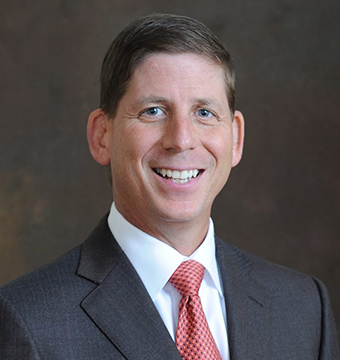The following is adapted from Called to Care.
When you walk into a medical office in the United States these days, you’re typically met with paperwork clipped neatly onto a board with a pen and a chain. You know the paperwork will ask you, in a million different ways, what’s wrong with you, along with dozens of other useless questions.
You take a deep breath and find a leather chair. You look around the room and are met with forlorn faces tucked into magazines. However, it’s clear those faces aren’t really focused on the news, gossip, or lifestyle advice found in those pages; they’re waiting to be needled, probed, queried, and hurried so they can hear what’s wrong with them, get fixed, and be sent on their way.
But what if a visit to the doctor could look completely different? What if you were greeted by a friendly and compassionate front desk worker? What if, very quickly after, your personal health practitioner escorted you to a room where someone listened to you for quite a while before they even examined you? What if healthcare could be warm, comfortable, and above all, personal?
That’s precisely what the broaden-and-build theory of positive emotions suggests is possible, and fortunately, it’s given us some clear directions for how we can improve healthcare today.
The Broaden-and-Build Theory of Positive Emotions
The psychologist Barbara Fredrickson pioneered the broaden-and-build theory of positive emotions, which illuminates the importance of positivity for broadening our mindsets and expanding our range of vision and possibility.
The theory might be best understood by first considering the opposing mindset: stress. When we become stressed, we tend to become narrow-minded and undergo a myriad of negative physiological challenges like higher blood pressure, a quickening pulse, and spikes in cortisol. We’re mentally prepared for “fight” or “flight”—or, given our present-day realities, to hit send on that email. Medical providers who are stressed through regulatory requirements and productivity workplace demands are not immune to this scenario.
Fredrickson’s broaden-and-build theory of positive emotions says that positive emotions broaden thought and action, enabling individuals to be flexible in higher-level connections and consider wider-than-usual ranges of precepts, ideas, and actions. A broadened thought process enhances flexibility that, in turn and over time, builds personal resource availability, including mindfulness, resilience, social closeness, and even physical health.
Frederickson likens the effect of positivity to the heliotropic effect of plants when they turn toward the light, reaching open to take in as much as possible. Positivity and open-mindedness are freed and feed upon each other, creating upward spirals of positivity. Positive thoughts lead to more expansive, creative decision-making, improve the ability to find solutions to problems, and create more trusting relationships. As such, positivity is best thought of as a gift that keeps on giving. And it’s a gift that we desperately need in healthcare today.
What the Broaden-and-Build Theory Can Do for Healthcare
The broaden-and-build theory suggests that hedonic well-being—the experience of pleasant emotions—and eudemonic well-being—striving toward your potential and purpose in life—go hand-in-hand. When healthcare professionals focus on creating positive experiences for their patients, they not only make the experience more pleasant for the patient, but they also find more fulfillment and success in their job.
In the long term, this allows professionals to accumulate emotional intelligence skills and resources they can leverage in their relationships. More specifically, they’re able to develop a heightened sensitivity to the role that social and emotional factors play on patients’ thoughts and behaviors. This has significant implications for our patients.
When patient care focuses on positive emotions, the provider and patient are able to engage more effectively. Their openness leads to mutually agreed expectations, clear treatment explanations that patients can understand, and a more relaxed and natural setting. This nurturing increases perceived ownership of the shared plan and makes adherence and engagement with treatment more likely. Positive, high-quality relationships are the hallmark of what is referred to as patient-centered care. Even though practitioners’ pleasant, positive emotions may seem fleeting, they actually have a longer-lasting effect on the patient and improve functional outcomes that, in turn, lead to greater well-being and connectedness.
As further evidence has evolved, it also indicates that positivity impacts multiple body systems. Fredrickson and Levenson have shown that positive emotions, both amusement and contentment, can speed up cardiovascular recovery from anxiety and fear. Perhaps even more significant, positive emotions have been shown to help patients rebound from adversity, cardiovascular reactivity, ward off depressive symptoms, and continue to grow.
The Broaden-and-Build Blueprint
The broaden-and-build theory of positive emotions proves that positive emotions are far more effective in healthcare settings than their formal, institutional alternatives. Positive thinking can blend emotions with purpose and cultivate necessary skills and resources, including emotional intelligence.
Fredrickson’s theory has significant potential benefits for patients, healthcare practitioners, and workplace dynamics, particularly at this moment when digital distractions de-emphasize and monopolize our time with patients. We should view positivity as a competitive advantage in the marketplace because it is teachable, energizing, and enables flourishing. This, in turn, leads to better healthcare outcomes, a richer and more pleasing environment to work in, and better, kinder and more compassionate patient care. The broaden-and-build blueprint is the perfect antidote to what is ailing us in healthcare.
For more advice on the broaden-and-build theory, you can find Called to Care on Amazon.
